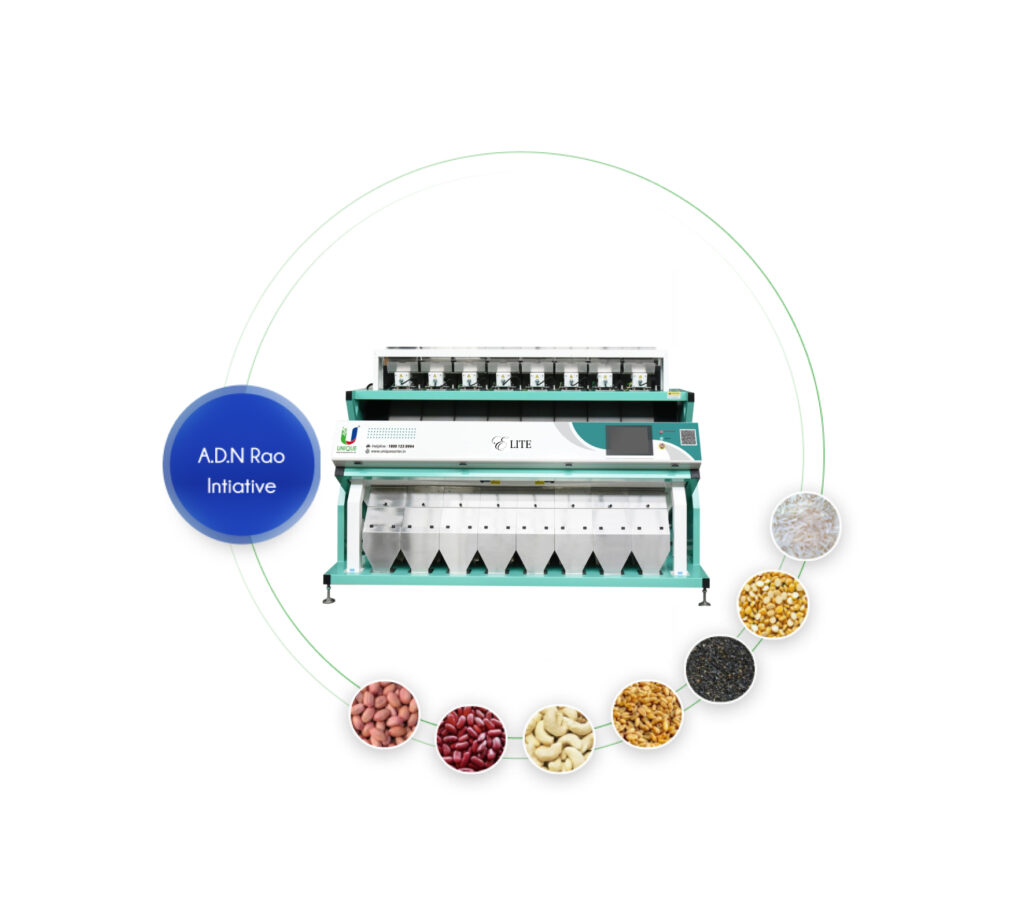Unveiling the Paddy Outlook: Key Insights for January 2024

Paddy, one of the most vital cereal crops globally, holds significant importance in the agricultural landscape. As we delve into the Paddy Outlook for January 2024, it’s essential to grasp the overarching trends and projections shaping its production and consumption dynamics. According to the latest data from the United States Department of Agriculture (USDA), global rice production for the 2023/24 season is forecasted at a record 518.1 million tons (milled basis).
This projection marks an increase of 271,000 tons from the previous month’s forecast and a substantial rise of 5.1 million tons compared to the previous year. Despite upward revisions in production estimates for countries such as Argentina, Paraguay, South Korea, and Thailand, there are slight downward revisions for Colombia, Haiti, Mozambique, and Uganda. Furthermore, global domestic and residual use is anticipated to reach a record 525.0 million tons in 2023/24, reflecting a significant uptick of almost 4.1 million tons compared to the previous year. However, despite increased consumption, global ending stocks for the same period are projected at 167.8 million tons, indicating a slight increase of 342,000 tons from the previous forecast.
Nonetheless, this figure represents a notable decrease of 7.0 million tons compared to the previous year, marking the smallest ending stocks in six years. As we navigate through the Paddy Outlook for January 2024, understanding these production, consumption, and stock trends is essential for stakeholders across the agricultural supply chain to make informed decisions and strategies for the upcoming months.
Major Rice Producing Countries in the World (Milled production in million tonnes)
The global landscape of agricultural production is a dynamic tapestry influenced by myriad factors such as climate, technology, and market demand. As we venture into the realm of country-wise paddy production statistics for the 2023-24 season, it becomes imperative to unravel the intricacies of these numerical insights. The provided data offers a comparative analysis between the 2022-23 and 2023-24 seasons, shedding light on the evolving paddy production trends across various nations.
| Country | 2022-23 | 2023-24 | Change over 2022-23 |
| China | 145.95 | 149.00 | 3.05 |
| India | 135.76 | 132.00 | -3.76 |
| Indonesia | 34.00 | 33.50 | -0.50 |
| Vietnam | 26.94 | 27.00 | 0.06 |
| Thailand | 20.91 | 20.00 | -0.91 |
| Burma | 11.80 | 11.95 | 0.15 |
| Philippines | 12.63 | 12.60 | -0.03 |
| Japan | 7.48 | 7.30 | -0.18 |
| Pakistan | 5.50 | 9.00 | 3.50 |
| Brazil | 7.00 | 7.48 | 0.48 |
| USA | 5.09 | 6.98 | 1.89 |
| Nigeria | 5.36 | 5.23 | -0.13 |
| Egypt | 3.60 | 3.78 | 0.18 |
| South Korea | 3.76 | 3.70 | -0.06 |
| European Union | 1.34 | 1.43 | 0.09 |
China, the world’s largest producer of paddy, demonstrates a notable increase in production, with a rise of 3.05 million metric tons from the previous season, reaching an impressive 149.00 million metric tons in 2023-24. Conversely, India, a significant player in the global paddy market, experiences a decline of 3.76 million metric tons, reaching 132.00 million metric tons in the same period.
Examining other key players in the paddy production landscape, countries like Indonesia, Thailand, and the Philippines witness marginal decreases in production, while nations like Pakistan, the USA, and Brazil demonstrate promising growth trajectories, with increases ranging from 0.48 to 3.50 million metric tons.
Furthermore, nuanced shifts in production are observed in countries such as Vietnam, Burma, Japan, Nigeria, Egypt, South Korea, and the European Union, highlighting the diverse array of factors influencing paddy cultivation and harvest across different regions.
International Grain Council’s World Rice Projections (in million metric tonnes)
| 2021/22 (Estimated) | 2022-23 (Forecast) | 2023-24 (Projected) | |
| Opening Stocks | 181.5 | 175.7 | 170.9 |
| Production | 515.3 | 515.3 | 520.9 |
| Imports | 55.1 | 52.4 | 50.1 |
| Total Availability | 696.8 | 691 | 691.8 |
| Total Consumption | 521.1 | 520.1 | 520.4 |
| Exports | 55.1 | 52.4 | 50.1 |
| Ending Stocks | 175.7 | 170.9 | 171.4 |
The International Grain Council (IGC) serves as a beacon of insight into the global grain market, offering invaluable projections and forecasts that underpin strategic decision-making in the agricultural sector. In the realm of rice, a staple food for billions worldwide, the IGC’s World Rice Projections provide a comprehensive overview of supply, demand, and market dynamics.
For the 2023-24 season, the IGC presents a detailed forecast, building upon the estimated figures of the preceding seasons. The data showcases the intricate balance between production, consumption, trade, and stocks, offering a nuanced perspective on the state of the global rice market.
Opening Stocks:
Commencing with a glimpse into the reserves carried over from the previous seasons, the IGC’s projections reveal a gradual decline in opening stocks, from 181.5 million metric tonnes in 2021/22 to 170.9 million metric tonnes in 2023-24. This reduction sets the stage for an intriguing exploration of supply dynamics in the coming season.
Production:
Despite consistent production levels at 515.3 million metric tonnes for the past two seasons, the projected figure for 2023-24 sees a modest uptick, reaching 520.9 million metric tonnes. This anticipated increase in production underscores the resilience of global rice cultivation amidst evolving climatic conditions and agricultural practices.
Imports and Exports:
Trade plays a pivotal role in shaping the global rice market, with imports and exports reflecting the interconnectedness of nations in meeting their consumption needs. The IGC’s projections indicate a gradual decline in both imports and exports, emphasizing the equilibrium sought between domestic production and international trade.
Total Availability and Consumption:
Total availability, encompassing production and imports, remains relatively stable over the forecast period, hovering around 691-692 million metric tonnes. Concurrently, total consumption mirrors this trend, indicating a balanced equation between supply and demand in the global rice market.
Ending Stocks:
As the culmination of the production-consumption cycle, ending stocks represent the buffer against unforeseen disruptions in supply. The IGC’s projections unveil a marginal increase in ending stocks for the 2023-24 season, reflecting cautious optimism amidst the uncertainties of agricultural production and trade.
Average Price of Paddy Common at Major States in India December, 2023
The price dynamics of agricultural commodities serve as a barometer of the economic health and vitality of a nation’s agrarian sector. In December 2023, the average price of Paddy Common across major states in India offers a nuanced glimpse into the intricate interplay of factors influencing market fluctuations. This report delves into the comparative analysis of Paddy Common prices, juxtaposing data from November 2023 and December 2022, to discern emerging trends and patterns in the pricing landscape.
The dataset unveils a mosaic of price movements, reflecting both short-term fluctuations and long-term trends across diverse agricultural regions of India. Notably, the % change indicators provide insights into the month-on-month and year-on-year variations, elucidating the pace and magnitude of price adjustments amidst evolving market dynamics.
| State | Prices Dec, 2023 | Prices Nov, 2023 | Prices Dec, 2022 | % Change (Over Previous Month) | % Change (Over Previous Year) |
| Andhra Pradesh | 2206 | 2261 | 2040 | -2.43 | 8.14 |
| Chhattisgarh | 2185 | 2168 | 1981 | 0.78 | 10.3 |
| Gujarat | 2572 | 2087 | 1673 | 23.24 | 53.74 |
| Haryana | 4378 | 2946 | 4359 | 48.61 | 0.44 |
| Karnataka | 2713 | 2340 | 2245 | 15.94 | 20.85 |
| Kerala | 2236 | 2185 | 2051 | 2.33 | 9.02 |
| Madhya Pradesh | 3651 | 3630 | 3218 | 0.58 | 13.46 |
| Maharashtra | 2820 | 2664 | 2242 | 5.86 | 25.78 |
| Manipur | 2883 | 2567 | 1624 | 12.31 | 77.52 |
| NCT of Delhi | 3563 | 3587 | 3221 | -0.67 | 10.62 |
| Odisha | 2183 | 2183 | 2040 | 0 | 7.01 |
| Pondicherry | 2139 | 2285 | 1757 | -6.39 | 21.74 |
| Punjab | 2315 | 2204 | 3924 | 5.04 | -41 |
| Rajasthan | 3661 | 3463 | 3360 | 5.72 | 8.96 |
| Tamil Nadu | 2470 | 2289 | 1986 | 7.91 | 24.37 |
| Telangana | 2328 | 1709 | 2057 | 36.22 | 13.17 |
| Tripura | 1981 | 2043 | 1972 | -3.03 | 0.46 |
| Uttar Pradesh | 2178 | 2243 | 2071 | -2.9 | 5.17 |
| Uttrakhand | 2154 | 2122 | 2009 | 1.51 | 7.22 |
| West Bengal | 2204 | 2171 | 2001 | 1.52 | 10.14 |
| Average | 2641 | 2457.35 | 2360.19 |
From the southern states of Andhra Pradesh, Karnataka, and Tamil Nadu to the northern plains of Haryana and Uttar Pradesh, each region presents a unique narrative of price shifts and market responses. Factors such as supply-demand dynamics, climatic variations, government policies, and global market trends converge to shape the price trajectories of Paddy Common in these regions.
As we embark on a journey through the labyrinth of price data, it becomes imperative to decipher the underlying drivers behind each state’s pricing dynamics. Whether it’s the steep ascent in Gujarat’s Paddy Common prices, propelled by a staggering 53.74% increase over the previous year, or the resilient performance of Manipur’s market, registering a notable 77.52% surge, each state contributes a piece to the broader tapestry of India’s agricultural economy.
Furthermore, the report sheds light on outliers and anomalies, such as Punjab’s drastic % change over the previous year, underscoring the influence of localized factors and policy interventions on price stability and volatility.
Insights from the Ministry of Agriculture:
| STATE | Lakh ha 2022-23 | Lakh Acr 2022-23 | % to total area 2022-23 | Lakh ha 2023-24 | Lakh Acr 2023-24 | % to total area 2023-24 |
| Tamil Nadu | 11.496 | 28.41 | 57.43 | 11.12 | 27.48 | 61.85 |
| Telangana | 3.121 | 7.71 | 15.59 | 3.088 | 7.63 | 17.17 |
| Andhra Pradesh | 2.78 | 6.87 | 13.89 | 1.66 | 4.10 | 9.23 |
| Assam | 0.675 | 1.67 | 3.37 | 0.762 | 1.88 | 4.24 |
| Kerala | 0.83 | 2.05 | 4.15 | 0.75 | 1.85 | 4.17 |
| Other | 1.11 | 2.75 | 5.57 | 0.60 | 1.48 | 3.34 |
| Total | 20.016 | 49.46 | 100.00 | 17.98 | 44.43 | 100.00 |
The latest data released by the Ministry of Agriculture provides valuable insights into the current state of Yasangi (Rabi) paddy acreage, revealing a notable decline of 10.14% compared to the previous year. As of January 5th, 2024, the total acreage stands at 17.98 lakh hectares (44.43 lakh acres), down from 20.01 lakh hectares (49.46 lakh acres) during the same period last year. Notably, higher acreage was observed in states such as Tamil Nadu, Telangana, Andhra Pradesh, Assam, and Kerala, indicating varying trends in agricultural practices across different regions.
First Advance Estimates 2023-24:
The first advance estimates for the 2023-24 season, released by the Government of India, paint a picture of the rice crop’s projected production. According to these estimates, the rice crop is expected to yield 1063.13 lakh tonnes, reflecting a decline from the previous season’s production of 1105.12 lakh tonnes. Among the states, Uttar Pradesh emerges as the leader in production, with an estimated yield of 151.98 lakh tonnes, followed closely by Punjab, West Bengal, Telangana, Chhattisgarh, and Odisha. These estimates provide valuable insights into the anticipated production levels, setting the stage for strategic planning and resource allocation in the agricultural sector.
Paddy Price Outlook:
The procurement of paddy by the government for the 2023-24 Kharif Marketing Season (KMS) has been robust, with approximately 435 lakh metric tonnes (MT) acquired from various states until December 30th. A breakdown of state-wise procurement figures reveals significant contributions, with Punjab leading the tally at 185 lakh MT, followed by Haryana at 58.92 lakh MT, and Chhattisgarh at 61.24 lakh MT. Telangana, Uttar Pradesh, Andhra Pradesh, Madhya Pradesh, Bihar, and Tamil Nadu have also contributed substantially to the government’s procurement efforts.
Initiatives to Stimulate Market Participation:
In a bid to encourage wider participation from rice traders in the Open Market Sales Scheme, the Food Corporation of India (FCI) has revised its bid quantity and minimum bid quantity criteria. Traders can now bid for up to 2,000 MT, doubling the previous limit, and the minimum bid quantity has been reduced to 1 MT from the previous requirement of 10 MT. These measures aim to enhance market liquidity and facilitate more active participation from traders.
Market Trends and Policy Updates:
The domestic market witnessed a decline in Basmati rice prices towards the end of December, attributed to anticipated reductions in exports following militant attacks on merchant vessels in the Red Sea. Increased freight charges have deterred purchasers from booking shipments, exerting downward pressure on Basmati rice prices within the domestic market. Additionally, the Indian government has extended the ban on exporting de-oiled rice bran (DORB) until March 31st, 2024, impacting feed production for cattle and poultry.
Revisions in Trade Regulations:
The Directorate General of Foreign Trade (DGFT) has made amendments to export regulations, requiring a Certificate of Inspection from Export Inspection Agencies / Export Inspection Councils (EIA/EIC) for exporting rice (both Basmati and Non-Basmati) to EU member states, as well as the United Kingdom and several other European countries. However, export to other European countries will not necessitate this certificate for a period of six months.
Continued Humanitarian Aid and Export Dynamics:
Despite the ban on rice exports, India remains committed to supplying food to needy countries, particularly strategic neighbors and broader Asian regions. Government-to-government exports facilitated by the National Cooperative Exports Ltd. continue to support countries such as Nepal, Bhutan, Sri Lanka, Maldives, Malaysia, Indonesia, Vietnam, and Iran. The price of India’s 5% broken parboiled rice has witnessed a slight increase, ranging between $508 to $515 per MT.
Paddy Price Forecast for January 2024:
In light of these developments, the Agricultural Market Intelligence Centre, PJTSAU anticipates that Paddy-Grade-A and Paddy-Common could trade within the price ranges of Rs. 2280–2780 and Rs. 2203–2410 per quintal, respectively, during January 2024. These forecasts provide valuable insights for stakeholders navigating the dynamic landscape of the paddy market.
References:
Get A Quote
Related Post
Discover the art of precision with our color sorter: revolutionizing sorting processes with unparalleled accuracy and efficiency.
Elite Rice Colour Sorter Machine
Elevate your rice sorting efficiency with precision, innovation, and reliability.

Elite Corn Color Sorter Machine
Elite Corn Color Sorter Machine, powered by the revolutionary Jarvis system and Smart vision technology.

Elite Coffee Bean Sorter Machine
Elite Coffee Bean Sorter Machine, a pinnacle of precision and efficiency in the world of coffee sorting technology.


